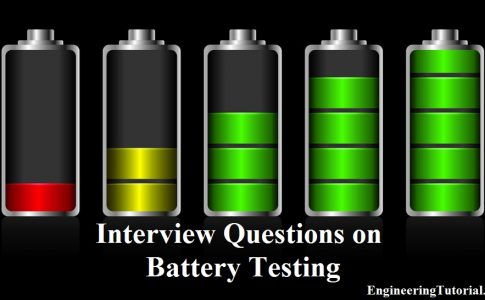A transistor consists of two pn junctions formed by *sandwiching either p-type or n-type semicon-ductor between a pair of opposite types. Accordingly ; there are two types of transistors, namely;
(i) n-p-n transistor (ii) p-n-p transistor
An n–p–n transistor is composed of two n-type semiconductors separated by a thin section of p-type as shown in Fig. (i). However, a p-n-p transistor is formed by two p-sections separated by a thin section of n-type as shown in Fig. (ii).

In each type of transistor, the following points may be noted :
(i) These are two pn junctions. Therefore, a transistor may be regarded as a combination of two diodes connected back to back.
(ii) There are three terminals, one taken from each type of semiconductor.
(iii) The middle section is a very thin layer. This is the most important factor in the function of a transistor.
Transistor Terminals
A transistor (pnp or npn) has three sections of doped semiconductors. The section on one side is the emitter and the section on the opposite side is the collector. The middle section is called the base and forms two junctions between the emitter and collector.
(i) Emitter. The section on one side that supplies charge carriers (electrons or holes) is called the emitter. The emitter is always forward biased w.r.t. base so that it can supply a large number of *majority carriers. In Below Fig. (i), the emitter (p-type) of pnp transistor is forward biased and supplies hole charges to its junction with the base. Similarly, in Below Fig. (ii), the emitter (n-type) of npn transistor has a forward bias and supplies free electrons to its junction with the base.
(ii) Collector. The section on the other side that collects the charges is called the collector. The collector is always reverse biased. Its function is to remove charges from its junction with the base. In Below Fig (i), the collector (p-type) of pnp transistor has a reverse bias and receives hole charges that flow in the output circuit. Similarly, in Below Fig. (ii), the collector (n-type) of npn transistor has reverse bias and receives electrons.
(iii) Base. The middle section which forms two pn-junctions between the emitter and collector is called the base. The base-emitter junction is forward biased, allowing low resistance for the emit-ter circuit. The base-collector junction is reverse biased and provides high resistance in the collector circuit.

Facts about the Transistor
Before discussing transistor action, it is important that the reader may keep in mind the following facts about the transistor :
(i) The transistor has three regions, namely ; emitter, base and collector. The base is much thinner than the emitter while **collector is wider than both as shown in Fig. However, for the sake of convenience, it is customary to show emitter and collector to be of equal size.
(ii) The emitter is heavily doped so that it can inject a large number of charge carriers (electrons or holes) into the base. The base is lightly doped and very thin ; it passes most of the emitter injected charge carriers to the collector. The collector is moderately doped.
(iii) The transistor has two pn junctions i.e. it is like two diodes. The junction between emitter and base may be called emitter-base diode or simply the emitter diode. The junction between the base and collector may be called collector-base diode or simply collector diode.
(iv) The emitter diode is always forward biased whereas collector diode is always reverse biased.
(v) The resistance of emitter diode (forward biased) is very small as compared to collector diode (reverse biased). Therefore, forward bias applied to the emitter diode is generally very small whereas reverse bias on the collector diode is much higher.
Related Articles :
Engineering Tutorial Keywords:
- transistor basics
